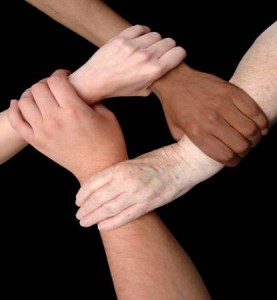Cultural Diversity
Cape Town is one of the most culturally diverse cities in the world, though this has not exactly translated into a rainbow of ethnic harmony. The legacy of apartheid still hangs heavy over South Africa. Cape Town is home to a large “colored” population: people who under the apartheid system were not considered either black or white, but occupied a netherworld of privilege somewhere in between. Constituting nearly half the city’s population, the colored citizens largely supported the former ruling party in recent elections, putting it at odds with the supporters of the current majority party, the African National Congress.
In contrast to these political divisions is the Cape Town Festival, which celebrated its sixth year in 2005. A blend of music, craft, theater, film, dance, and food – representing all the different cultures of the city and South Africa more generally – the Festival attracted 111,000 celebrants during its 20-day run in March 2005. The theme of the 2005 event was Ubuntu or “celebrating our cultural roots” and comes from a Xhosa proverb that means “I am because we are.” A symposium on racial diversity took place amidst the cultural events. “What started out as a social initiative in 1999 to address the city’s cultural diversity and intolerances through the One City Many Cultures Project,” said Cape Town mayor Nomaindia Mfeketo, “has now grown into a true arts and culture festival which Capetonians can be proud of.”
The spectrum of cultural diversity ranges from Bosnia to Benetton, from fratricide to multiracial fraternity. Unfortunately, difference has more often been a cause for elimination than celebration in world history. The disappearance of the German Slavs, the legendary Scythians, or the original Angles of England was not a voluntary affair. Forced assimilation, deliberate genocide, and the routine imposition of the strong upon the weak (or, at least, the less strong) have long been mechanisms for perpetuating a ruling culture and maintaining overall social cohesion.
At the same time, prior to the rise of the nation-state and the spread of European notions of race, there were many examples of interethnic tolerance. In the 7th century city of Canton in China, for instance, Chams, Khmers, Javanese, and Singhalese rubbed shoulders with Iranians, Arabs, and Persians in commerce and politics. The Chinese, by and large, appreciated the local color. This tradition of tolerance as “good for business,” which kept the Silk Road humming for a thousand years, has reemerged in the “United Colors of Benetton” ads that celebrate the beauty of diversity. It has also contributed to making diversity trainings for the corporate world a fashionable trend.
Tolerance in an increasingly multicultural workplace is a corporate necessity, but radical diversity advocates want more than passive acceptance: they call for active understanding and appreciation of difference. Identity politics is not simply about representation. It is about the politics of recognition: of rights, of historic grievances, of current contributions. Weak variants of tolerance provide little in the way of recognition. Still, as violent conflicts continue to rage throughout the world over differences both minor and major – across religions, ethnicities, genders, sexualities, nationalities, classes, political ideologies, cultures – even weak forms of tolerance, and the acknowledgement of underlying commonalities, begin to look attractive in comparison.
Has identity politics enriched the fabric of nations or fractured national culture? Does the active cultivation of subcultures act as a significant hedge against assimilation or does it simply postpone the day when the dominant culture proves ultimately absorptive? Is there such a thing as collective rights and how do liberal democracies accommodate them? Is multiculturalism a Western construct or, more specifically, an American idea that arises from a particular immigrant experience?
On a trip to Provisions, you can read Lucy Lippard on art in multicultural America in Mixed Blessings, peruse the magazine ColorLines for the latest in race, culture, and organizing, log on to review UNESCO’s cultural offerings, check out Y. David Chung’s intriguing art and performance work, listen to poet Piri Thomas accompanied by Afro-Latin jazz in Sounds of the Streets, and watch the dazzling film 1 Giant Leap as it moves across countries and genres.


